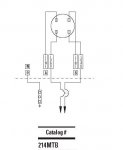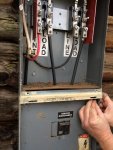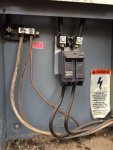- Location
- Placerville, CA, USA
- Occupation
- Retired PV System Designer
I don't think so. See 705.12(A). If it's on the supply side of the service disconnecting means, it's a supply side connection. Otherwise, it's a load side connection. The presence or absence of loads is inconsequential.
If there are loads (other than incidental PV related loads such as inverter idling) on the same side of the service breaker as the PV backfeed, I would call that a service disconnect. To me the PV disconnect must disconnect only the PV. Otherwise you would have the somewhat strange situation where the main breaker in the service panel has to be considered as the PV disconnect and therefore not required to be service rated. :happysad:




